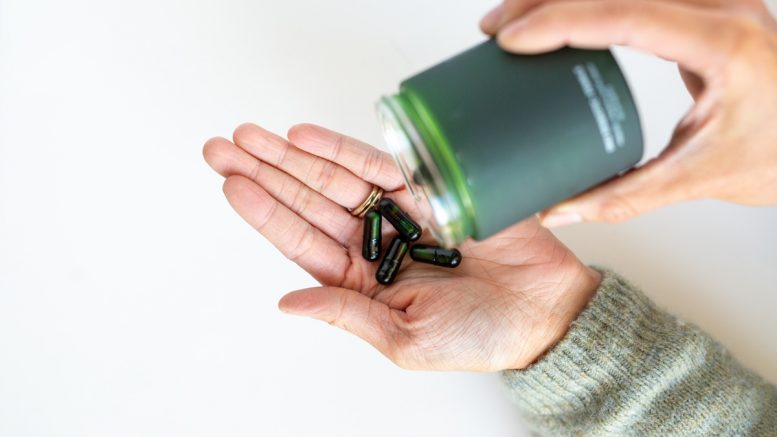Last month, NHS England released a troubling statistic: the UK is struggling to meet its population’s basic daily vitamin requirements. While this points to a pressing public health issue, it also reveals something deeper, something more cultural. Despite living in an age of constant information, consumers are more confused than ever when it comes to nutrition.
For supplement brands, this presents both a huge opportunity and an equally significant responsibility. The UK supplement market is worth over £1.7 billion. But value isn’t just measured in revenue, it’s about cultural capital too. And right now, this space is saturated by pseudoscience, performative wellness, and algorithm-fuelled misinformation. If we’re serious about improving health outcomes, brands need to stop selling confusion wrapped in pretty packaging and start providing clarity.
The Clarity Advantage
We recently released our Breaking Behaviours report, exploring the gap between attitudes and actions across various sectors. And when it comes to wellness, one behaviour in particular feels urgent right now: The Clean Catch-Up.
This behaviour reflects a growing demand for simplicity, transparency and science-backed claims, especially when it comes to what we put in our bodies. “Clean” no longer just applies to skincare routines or beauty products. It’s becoming a shorthand for products rooted in integrity. And unlike vague attitudinal shifts, this one’s behavioural. It’s already showing up in the way people buy, review, and recommend. From compostable supplements packaging to full transparency on ingredients, brands that prioritise clarity are building trust fast.
But trust isn’t built through product alone.
Brands need to think holistically and about their entire ecosystem. That means moving beyond making vitamins “sexier” and instead making them clearer. It’s about consistency across the board, from visual identity and packaging, to storytelling and content. It’s about building systems of clarity in a sea of confusion.
Our recent work with Ingenious, a supplements brand that formulates high-quality, science-led products, demonstrates this transparency well. Their USP – delivering nutrients in a way the body can actually absorb – was being lost in a crowded market. Our job wasn’t to rebrand the science, but to bring the science forward. From a digital world to debunk laborious science, every brand touchpoint was designed to educate and reassure, not overwhelm. The result is a brand that doesn’t just look trustworthy, but feels trustworthy at every moment of interaction.
We’re already seeing brands push transparency into exciting new spaces with supplements. Look at People Care. Planet Care. (formerly Haeckels) with fully compostable packaging and ultra-transparent pricing breakdowns. These are deliberate decisions that create new cultural standards for other brands to catch up with. People Care. Planet Care. has since become even more transparent. In a recent move, the skincare brand allowed customers to pick their price based on where they wanted money to go and how that money was used, from covering raw materials to donated towards their community initiatives in Margate
Of course, not every brand can make sweeping changes overnight. But even incremental moves towards clarity matter. From showing ingredient sourcing on-pack, to creating explainer content that demystifies the difference between Vitamin D2 and D3. Every bit helps rebuild consumer trust. As consumer expectations evolve, clarity isn’t just an opportunity—it’s becoming table stakes.
From Buyers to Believers
Trust isn’t only transactional. It’s also communal. This is where another behaviour from our report comes into play: The Hobbyist.
There’s been a clear shift in how people are engaging with wellness. But beyond the casual supplement crowd, there’s a growing group leaning all the way in – those on a mission to self-educate, decode the science, and understand their bodies better, one molecule at a time.
The hobbyists in the wellness space aren’t just customers, they’re potential community leaders. They want to go beyond the surface and into the science. For wellness brands, this opens up an incredible avenue for community-building. Brands can become platforms for learning, spaces that celebrate deep interest, rather than gloss over it. Whether that’s through ambassador programmes, hobby-specific guides, or interactive digital tools that let consumers personalise their stack, there’s space to move from passive consumption to active engagement.
Self-actualisation isn’t a solo journey anymore. People are seeking out others who share their values, interests, and passions. Brands can play a key role in this by elevating or sparking conversations around hobbies, passions, and interests, helping to tell those stories rather than dominating them. By creating spaces for these conversations, brands can connect with micro-communities in a more authentic way.
What’s the take-home message?
Transparency is no longer a bonus in the supplements market – it’s a necessity. And the brands who understand this will be the ones that thrive in the next wave of wellness. That means clarity in design. Honesty in messaging. Consistency across channels. And a deep respect for the intelligence and curiosity of modern consumers.
The NHS data is a wake-up call. But it’s not just about deficiencies in Vitamin D or Iron – it’s about deficiencies in how we communicate around health. The good news? Brands can do something about that.
By Jay Topham, Co-founder at Unfound Studio





